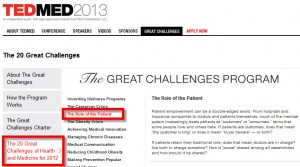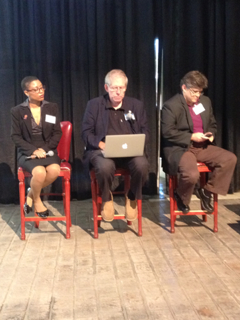 This post brings together several threads from the past year’s work. At the core is one of the Great Challenges for TEDMED 2013: The Role of the Patient. Roles exist in a context, and a new perspective on this context came to light today.
This post brings together several threads from the past year’s work. At the core is one of the Great Challenges for TEDMED 2013: The Role of the Patient. Roles exist in a context, and a new perspective on this context came to light today.
_______________
Those who’ve seen me speak know I spend a lot of time thinking about the underlying structural issues that keep healthcare from evolving. In particular, leaders like Warner Slack MD have been saying since the 1970s that patients are the most under-used resource in healthcare.
But many in the profession can’t imagine that participatory medicine could be valid.
Why? Why do so many physicians, administrators and health policy people roll their eyes at the idea of patient as partner? (Many don’t, but many do.)
I don’t ask this as a whine, I ask it as an inquiry.
Paul Levy is the former CEO of my hospital, Beth Israel Deaconess Medical Center. He’s also the one who introduced me to Dr. Danny Sands, my famous primary physician, who practices at BIDMC, saying “You’ll probably like this guy.” Well, GOOOAAALLL!, as they say in soccer. Which Paul plays, coaches, and referees. (He’s skinny.)
Today on his blog Paul writes How a Team Degrades. It’s a tale of a Lean exercise his hospital used, which he connects to a recent soccer episode. And I see a parallel with the role of the patient.
The Lean exercise:
A group of colleagues sat around a table and were given a problem to solve. Each person wore a hat with a label that could be seen by everyone at the table, except the person wearing the hat. The label might say “whines,” “creative,” “combative,” “unintelligent,” or some other characteristic.
Strikingly, within just a few minutes, people at the table began to treat each person as though the assigned characteristic were true.




